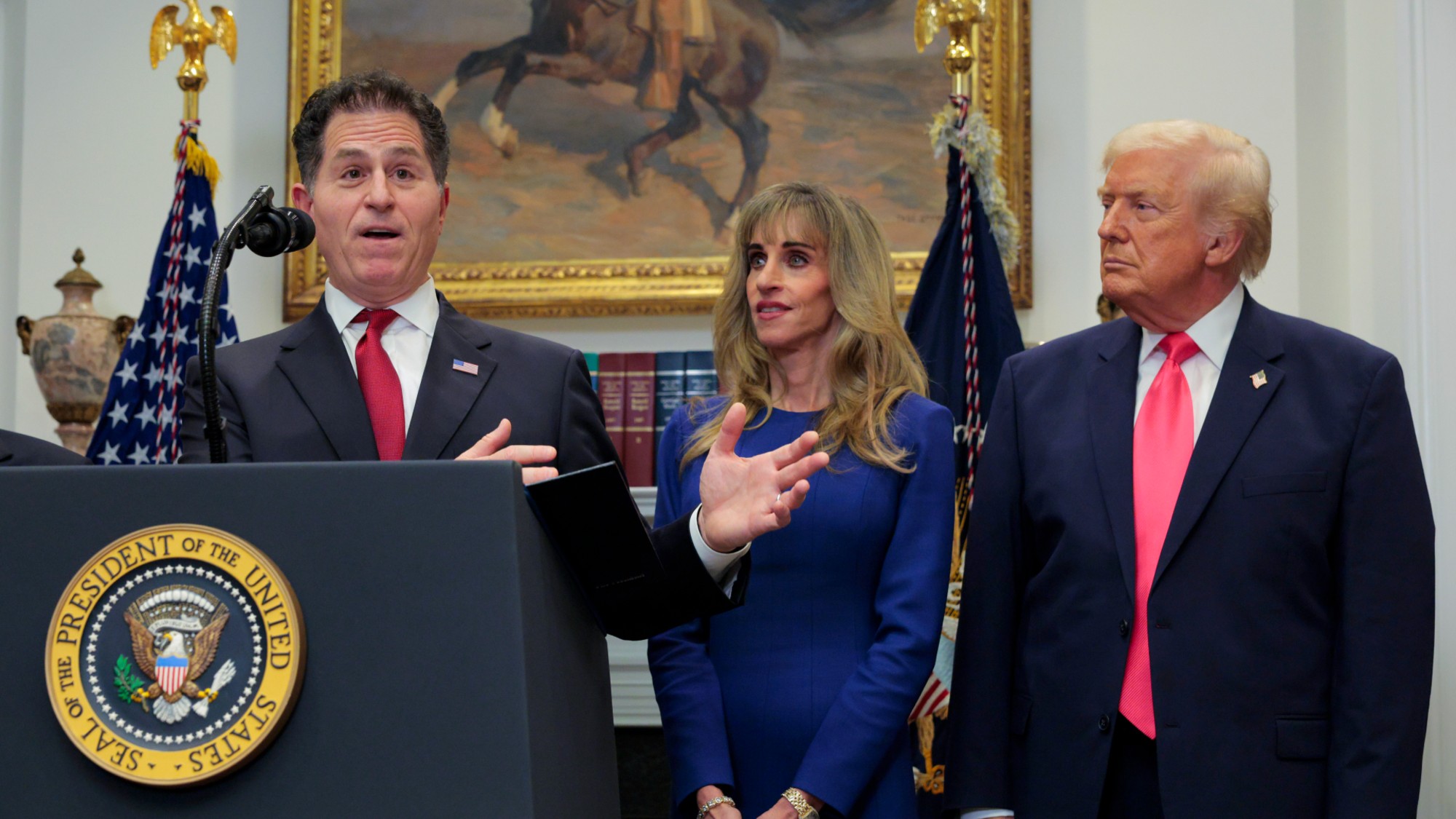Saving the post office
The U.S. Postal Service is facing mounting losses and growing calls for privatization. Can it survive?

What’s wrong with the USPS?
It has been bleeding red ink for decades. The U.S. Postal Service delivered 112 billion pieces of mail in fiscal year 2024 and collected $79.5 billion in revenue—up nearly 2 percent from 2023, thanks in part to two stamp-price hikes. But despite that revenue rise, the world’s largest postal service still had a $9.5 billion annual net loss, after losing $6.5 billion on $78.2 billion in revenue in fiscal 2023. Just days before announcing his immediate resignation this week, Postmaster General Louis DeJoy announced plans to reduce costs by eliminating 10,000 jobs through a voluntary retirement program and inviting Elon Musk’s Department of Government Efficiency to help the agency identify “further efficiencies.” Those reforms came on top of DeJoy’s existing 10-year “Delivering for America” plan, under which mail processing operations are being moved from hundreds of towns and cities to 60 regional “mega-centers,” on-time delivery targets are being lowered, and mail is left each night at many post offices rather than being collected for processing.
DeJoy, who was appointed by President Trump in 2020, said this restructuring is needed to fix “a broken organization” with “a broken business model.” Others see these reforms as part of a plot to weaken and eventually sell off the independent agency, which Trump has said should go private. “Make no mistake,” said Mark Dimondstein, president of the American Postal Workers Union. “The postal service is under attack.”
Why is the USPS losing money?
In part, it’s because the rise of electronic communications has led Americans to send less mail. The volume of first-class mail—which includes letters, postcards, and large envelopes—fell 50 percent from 2008 to 2023, from 92 billion to 46 billion. Meanwhile, marketing mail dropped by 40 percent over that period and periodicals by 65 percent. Package deliveries have soared with the boom in e-commerce, growing more than 300 percent since 2008. But that extra revenue can’t offset the fixed costs that the USPS says now make up 80 percent of its losses, including pension contributions for the agency’s 700,000 retirees and survivors, and for the 533,000 career employees who will retire in the future. Finding savings and new revenue streams that could help balance those costs is tricky for a largely self-funded agency with a mandate to deliver to all U.S. addresses, no matter how remote.
The Week
Escape your echo chamber. Get the facts behind the news, plus analysis from multiple perspectives.

Sign up for The Week's Free Newsletters
From our morning news briefing to a weekly Good News Newsletter, get the best of The Week delivered directly to your inbox.
From our morning news briefing to a weekly Good News Newsletter, get the best of The Week delivered directly to your inbox.
What fixes have been tried?
When he took office, DeJoy warned of “uncomfortable” rate hikes ahead. Forever Stamps have since jumped in price six times, going from 55 cents in 2020 to 73 cents today. As part of his 10-year plan, DeJoy—a former logistics-firm chief and Trump megadonor—also sharply cut employee overtime, reduced post office hours in several states, and cut the workforce by about 30,000 employees. His cost-shrinking drive got a boost in 2022, when Congress passed bipartisan legislation that rescinded a 2006 rule mandating the USPS pre-fund its retiree health benefits 75 years in advance, something demanded of no other federal agency. That law should save the agency about $27 billion by 2032.
Have DeJoy’s reforms worked? USPS ended the first quarter of 2025 with a $144 million profit—a rare gain after more than a decade of annual losses. But insiders and customers complain that DeJoy’s cost cuts have resulted in far worse service. Relaxed standards have led to a nearly 40 percent slowdown in first-class mail, with on-time delivery of three-to-five-day mail dropping from nearly 81 percent in 2019 to 73 percent last year. In Atlanta, a pilot version of DeJoy’s processing-centralization plan pushed on-time delivery of first-class mail down to as low as 36 percent in spring 2023. During a House Oversight Committee hearing last December, Rep. Rich McCormick (R-Ga.) told DeJoy that many businesspeople he knew refused to use the Postal Service because of such problems. As McCormick continued to lambaste DeJoy, the postmaster general covered his ears and said, “You’re talking to yourself.”
Are other reforms in the works?
Trump, who recently called the Postal Service “just a tremendous loser for this country,” has floated privatization or placing the agency under the authority of the Commerce Department. Such dramatic changes would require an act of Congress, and lawmakers from both parties are reluctant to tamper with a government body that’s viewed favorably by 72 percent of Americans. Privatization is “a very bad idea,” said Sen. Josh Hawley (R-Mo.). “There’s a lot of room to make [USPS] a lot better, but getting rid of it? No.” But Musk, whose DOGE organization has the Postal Service in its sights, insists that “we should privatize anything that can reasonably be privatized.” DeJoy’s departure could leave the agency vulnerable to a DOGE takeover.
What would privatization do?
Postal service outside cities would likely become less reliable—or in some cases, nonexistent. More than half of all post offices serve rural areas, including places where private competitors such as UPS and FedEx don’t find it cost-effective to operate. About 14.5 million rural Americans lack broadband internet access, making them dependent on the Postal Service for bill paying, prescription medications, and other essentials. “Everything important to them comes in the mail,” said postal worker Kay Foltz, who works out of a small central Ohio post office. “It really is a service that if people didn’t have, I think our country would be a lot different.”
A free daily email with the biggest news stories of the day – and the best features from TheWeek.com
-
 Can Mike Johnson keep his job?
Can Mike Johnson keep his job?Today's Big Question GOP women come after the House leader
-
 A postapocalyptic trip to Sin City, a peek inside Taylor Swift’s “Eras” tour, and an explicit hockey romance in December TV
A postapocalyptic trip to Sin City, a peek inside Taylor Swift’s “Eras” tour, and an explicit hockey romance in December TVthe week recommends This month’s new television releases include ‘Fallout,’ ‘Taylor Swift: The End Of An Era’ and ‘Heated Rivalry’
-
 ‘These accounts clearly are designed as a capitalist alternative’
‘These accounts clearly are designed as a capitalist alternative’Instant Opinion Opinion, comment and editorials of the day
-
 Coffee jitters
Coffee jittersFeature The price of America’s favorite stimulant is soaring—and not just because of tariffs
-
 Shein in Paris: has the fashion capital surrendered its soul?
Shein in Paris: has the fashion capital surrendered its soul?Talking Point Despite France’s ‘virtuous rhetoric’, the nation is ‘renting out its soul to Chinese algorithms’
-
 The 996 economy: Overtime, Silicon Valley–style
The 996 economy: Overtime, Silicon Valley–stylefeature After work, there’s...more work
-
 Autumn Budget: will Rachel Reeves raid the rich?
Autumn Budget: will Rachel Reeves raid the rich?Talking Point To fill Britain’s financial black hole, the Chancellor will have to consider everything – except an income tax rise
-
 Auto loans: Trouble in the subprime economy
Auto loans: Trouble in the subprime economyFeature The downfall of Tricolor Holdings may reflect the growing financial strain low-income Americans are facing
-
 Labor: Federal unions struggle to survive Trump
Labor: Federal unions struggle to survive TrumpFeature Trump moves to strip union rights from federal workers
-
 Nvidia: unstoppable force, or powering down?
Nvidia: unstoppable force, or powering down?Talking Point Sales of firm's AI-powering chips have surged above market expectations –but China is the elephant in the room
-
 DORKs: The return of 'meme stock' mania
DORKs: The return of 'meme stock' maniaFeature Amateur investors are betting big on struggling brands in hopes of a revival